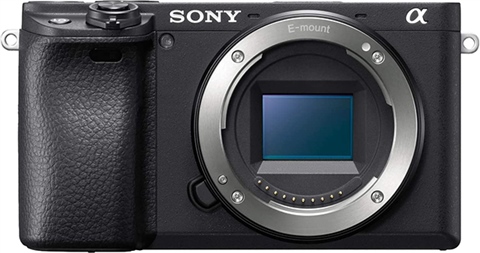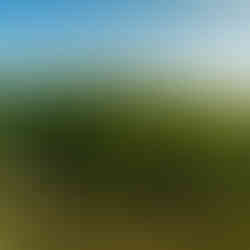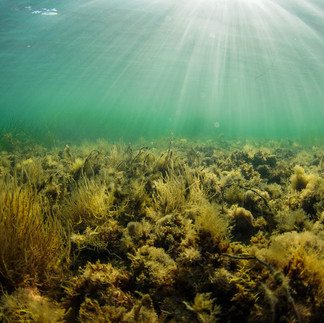Kit Focus: Seafrogs Salted Line Housing and the Tokina 10-17mm
- Jon Bunker
- Jan 12, 2022
- 6 min read
Updated: Jan 13, 2022
Both a bit of a belated look over the 2019 A6xxx ‘Salted Line’ Underwater Housing, coupled with my 2021 experiences of the Tokina 10-17mm (released in 2007).
The a6000 line has been a wildly successful camera for Sony, still selling strongly more than seven years after its debut in 2014. Half the size and weight of comparative DSLRs, the progressive, feature rich a6xxxs remain beloved amongst street photographers and those wildlife shooters too lazy to lug around heavy kit (myself included).
For all that, I know relatively few folks that seem to want to take their APS-C Sony cameras underwater with them, at least here in the UK. Speaking for my immediate UWP friends and buddies, the Olympus TG6, Canon G9x and G7x are far more ubiquitous. Those with interchangeable lens systems are very happy with their Olympus m4/3 systems or larger Nikon and Canon DSLRs. I've met a few APS-C Sony shooters, but yet more seem to be moving onto the full frame A7 series and beyond.
At least part of the reason for this scarcity of take-up is the is the persistent lack of fish-eye lenses from Sony themselves. And it is a truth universally acknowledged that a diver in possession of an interchangeable lens camera system must be in want of a fisheye lens. I mean, everything responds to curvature so much better down there and it can force some really neat perspectives. The company made a token gesture to address this apparent oversight with the SEL057FEC, a fisheye converter for the full frame 28mm, though I gather it is still quite soft at the edges. Alternatives on e-mount rely on employing either the sigma mc-11 or one of the Metabones adapters with either the super-sharp Canon 8-15mm or the legendary Tokina 10-17mm. Both lenses are now discontinued, but still widely available on ebay. The Canon is much better suited to full-frame and it’s prohibitively expensive (one day, hopefully) but I was able to pick up a clean example of the Tokina 10-15mm for £90 during the first lockdown:

The Sigma mc-11 Sony E to F adapter was almost twice as much, but necessary to attempt to mount this super wide angle underwater:

I first considered the Tokina for my a6000 after reading a surf photography blog by Ben Pascoe, where there was a reference to mounting the 10-17mm in the then brand new Seafrogs Salted Line housing he was reviewing. I already had a hope to set up the Sigma 19mm I was using in my existing Seafrogs (Gen 2) housing, but the appeal of getting a slightly more premium system with interchangeable ports, more solid build and controls- and possibly able to take the 10-17mm behind the 6” dome, was just too much for me!
That said, I didn’t purchase the new housing on a whim; I made sure I’d a proper chat with two users stateside who were happily diving with the 10-17 in their respective Salted Line housings. There are some fantastic and supportive folk on the Wetpixel and Scubaboard forums, who were also very happy to share their experiences. One had had even started 3D printing a port gear for the housing- which is already supplied with a focus gear for the kit 16-50mm and the rectilinear 10-18mm (Also still on my wish list!). I knew it should work just as well for me as the others, and I knew I needed the 6” rather than the available 4” or even 8” dome.
The first thing I did after receiving the full setup was seal up the redundant (for me) surf trigger port at the base of the housing. I wasn’t particularly concerned about reselling, and my research had thrown up at a couple of instances of leakage traced back to this port. I tightened, but did not over-tighten then port plug, filling the back in with successive thin layers of black witch wetsuit glue, thinking I wanted something that would keep the water out, but yet flex with changing pressure on the housing.
That done, it was time for the full assembly and the first test of the 10-17mm on the usb-updated Sigma MC-11. The nearest thing to hand was a small toy dinosaur, but it was sufficient to get me really excited about the close focusing distance of the lens on my a6000 body:

However, this initial success came to a screeching halt when the camera and lens were placed inside the housing, and I ended up dissatisfied with the whole business for a few weeks. Setting it up for a test shot on at least two occasions had resulted in surprisingly lengthy focus-hunting on the shutter. A trip with Georgie down to the gorgeously sunny Swanage Pier in August was made incredibly frustrating by the A6000's refusal to grab a solid focus:
Indeed, the best I managed all day was this one of a poor Tompot with a hook in its mouth. In this instance I think the fact that it was mostly in focus was just dumb luck.

Annoyed, but not deterred, I went back the Sigma 19mm DN art for a while, snagging these shots of the wreck of the Minx at nearby Osmington Mills, to keep my hand in with the 6” dome.
In the interval, I’d also spoken to Chris Boddington about his shots with his Tokina 10-17mm, the Metabones adapter and a slightly different dome. I became convinced that the most likely way out of the focus hunting was to either 1) ditch the Tokina altogether and try the SEL10-18mm in the hope that the expensive native lens would play nicer with the a6000's AF or 2) ditch the a6000 and try to pick up a more recent body with possibly improved AF.
It was the latter that I eventually plumped for, when a cheap(er) but unused a6400 came up. I had high hopes of the a6400, which outside of the IBIS, took quite a lot of tech from the Sony A9. The autofocus system, essential as there is no manual focus in the housing, was truly streaks ahead of the a6000- perhaps unsurprising as it was released five years down the line from that camera. Most importantly, it instantly killed off any trace of focus hunting, finally firing away at speed- just as I’d hoped.
A September bout of Covid 19 promptly put the screws on much diving toward the end of the 2021 season, but a brief snorkel has been enough to give me hope for some decent wide-angle action in 2022. These last ones are unprocessed Jpegs straight off the card:
Concluding Thoughts
Trial and error have made this a bit more of a lengthier and pricier endeavour than I’d intended at the outset, but I’ve not picked up anything I don’t see myself using on future rigs anyway. I had wondered if I was able to truck on with the sigma 19mm as my ‘wide’ until I’d saved the pennies for a proper Nauticam a7 full-frame of one flavour or another, but I’d like to think stretching for the Tokina in the Salted Line housing has given me some more options in the interim before I (eventually) head down that road. Plus with the tech moving so fast, I just don’t think there’s any point in buying an APS-C Nauticam setup these days; much better to invest in a full-frame rig and be able to merrily crop away (but that’s just my limited opinion).
My Salted line stop-gap is not going to be as perfect as a dedicated, designed optic- of course not; I do have realistic expectations. But if it does prove reliable, I really do think it’s the cheapest way of getting this lens underwater. Just remember that it must be the 6” dome if you’re considering doing similar yourself, and I’d also stick to either the a6400 or a6500 for your camera body-though the a6300 or a6100 AF might also be sufficient, I’m afraid I can’t speak for them.
Pricing it up
£380
or the recent optical glass upgrade:
£540
Budget £200 Tokina 10-17mm
Budget £200 for your mc-11 adapter
Budget £600 for an a6400 (though watch amazon too)
So for just over £1300 you can shoot underwater with a legendary super wide angle lens that’s a serious step up from an underwater compact. It’s certainly worth considering, at the least.
Whilst I wax lyrical here, I should stress I receive no endorsement or any kind of trial products from Seafrogs or any of the other brands mentioned (chance would be a fine thing!).
Thanks to Chris Boddington and the Sony Underwater Photographers UK group for all your helpful advice and encouragement https://www.facebook.com/groups/459551925384740




























































How did you know that you needed the 6" dome and not the 8" dome?
Thanks Jon, really helpful info here. I'm trying to decide on a wide angle setup for my A6500 in a salted line housing. My current setup is for macro: FE 90mm and long port. For wide angle: 10-18mm with the standard port (I haven't tried this yet but heading to the tropics soon so trying to get everything ready). I'm going to be doing a mix of surf photography and lots of snorkelling (maybe a dive or two but don't have strobes yet).
I'm a little concerned about swapping the ports over too often, seems like a recipe for disaster? I might just keep the standard port on and save the 90mm for land based shooting. I noticed a few…
Hi Jon, thanks for sharing your experience. I own the same camera + housing, and I am in the process of buying the Tokina 10-17mm lense. But I do have a question, can zoom in/out once inside the housing? Did you get an adapter of some sort? Thanks!